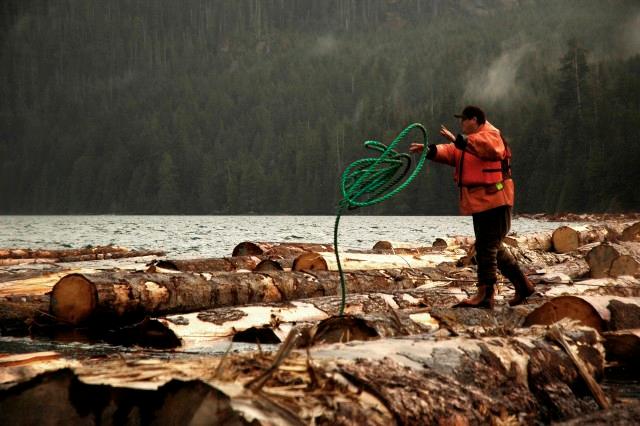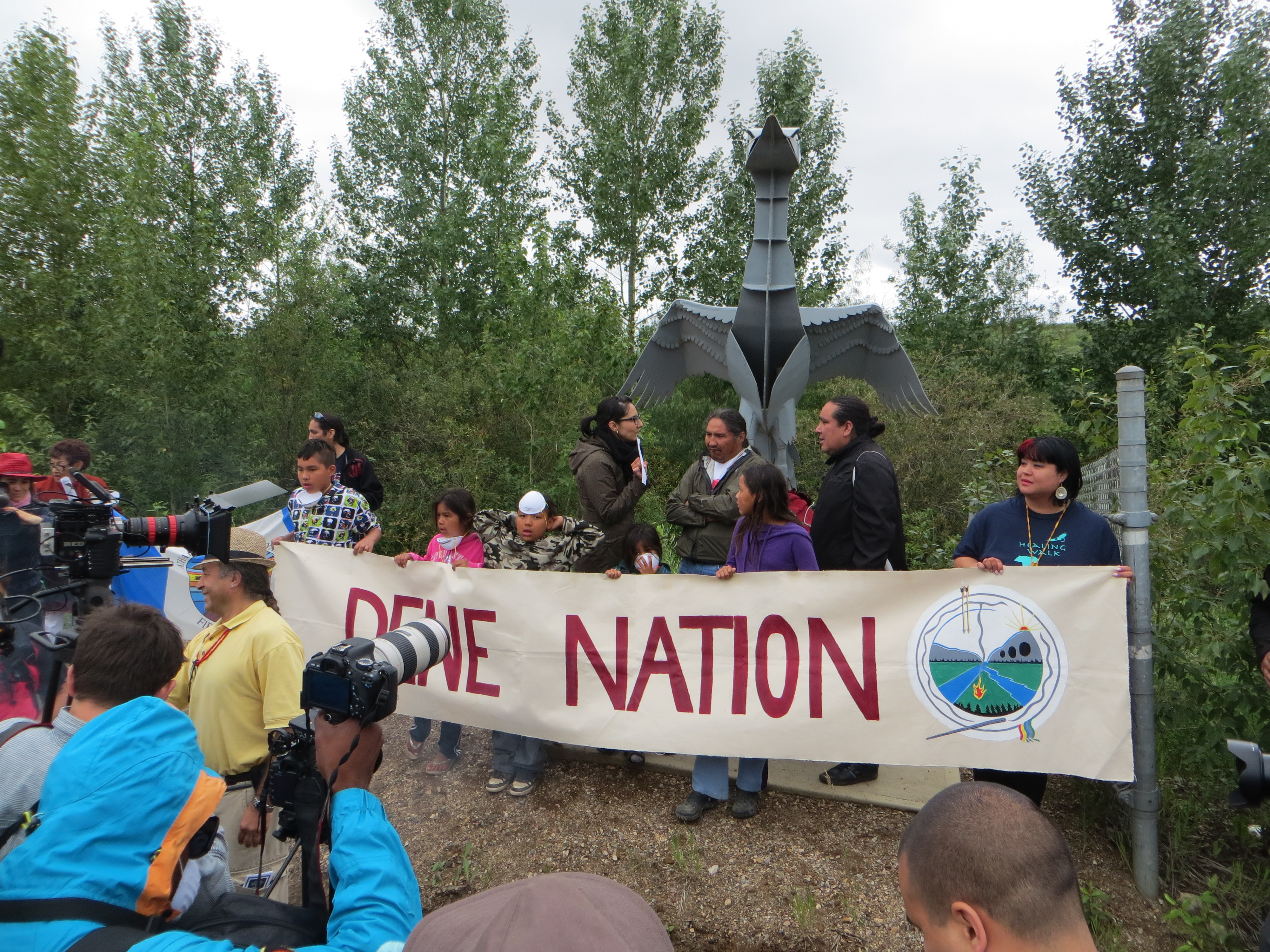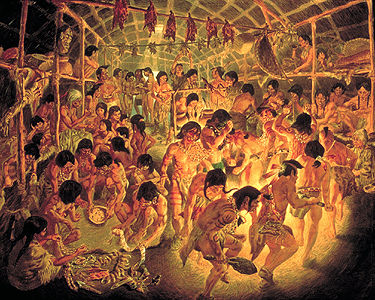Odawa (or Ottawa) are an Algonquian-speaking people (see Indigenous Languages in Canada) living north of the Huron-Wendat at the time of French penetration to the Upper Great Lakes. A tradition of the Odawa, shared by the Ojibwa and Potawatomi, states that these three groups were once one people. The division of the Upper Great Lake Algonquians apparently took place at Michilimackinac, the meeting point of lakes Huron and Michigan. The Odawa, or "traders," remained near Michilimackinac, while the Potawatomi, "Those-who-make-or-keep-a-fire," moved south, up Lake Michigan. The Ojibwa (Ojibwe), or "To-roast-till-puckered-up," went northwest to Sault Ste Marie.


Early Settlement and Economy
The farming, fishing, hunting and trading economy of the Odawa resembled that of other Great Lakes people (see Eastern Woodlands Indigenous Peoples in Canada). The Odawa were closely tied to their Huron neighbours and, in fact, were a vital part of the so-called "Huron Trading Empire." When Wendake (Huronia) was destroyed by the Haudenosaunee in the mid-17th century, the Odawa fled west. After two decades they were back on Manitoulin Island, but they continued to occupy settlements elsewhere on the shores of the Great Lakes. They located their principal settlements near the French fort at Michilimackinac, though many migrated to the Detroit area when the French built a fort there in 1701. During the final struggle for northeastern North America in the Seven Years’ War (1756-63), the Odawa supported the French against Great Britain.
After the French defeat, the Odawa, under Pontiac of the Detroit region, organized a pan-Indigenous uprising against the English, who threatened to encroach on Indigenous lands. Though unsuccessful, the uprising encouraged the British to issue the Royal Proclamation of 1763, which recognized the legal right of Indigenous communities to claim title to the lands they occupied. The proclamation is critical to Indigenous land rights in Canada, and still applies today (see Treaties; Land Claims).
During the American Revolution and the War of 1812, the Odawa sided with the British. Chief Jean-Baptiste Assikinack was one of the Odawa’s leaders in the War of 1812. After signing treaties in the 1820s and 1830s with the Americans, many Odawa in Michigan moved to Manitoulin Island. Assikinack, who had become a Roman Catholic catechist, persuaded many of his people on the island to become Christians. Although Assikinack supported the surrender of Manitoulin Island to the government of the Province of Canada in 1862, many Odawa refused and the eastern section of the island, at Wikwemikong, remains unceded land.

Population
In the 19th century, many Odawa operated their own farms or worked as farm labourers and lumbermen. Since 1945, a number of Odawa have moved from Wikwemikong to Sudbury and Toronto to find employment. For example, Daphne Odjig (1919-2016), a well-known Indigenous artist, was the great-great-great-granddaughter of Assikinack.
Because the Odawa tended to settle in mixed communities, it is difficult to state population figures. Many Odawa descendants are identified as Ojibwa or Potawatomi. In 1996, there were 7386 registered Odawa in Canada. Some 5000 lived in the US, on reservations in Michigan, Wisconsin and Oklahoma. The Odawa language is a dialect of Ojibway (Ojibwe), part of the Algonquian language family. In the 2016 Census, 28,130 Indigenous people were listed as Ojibway speakers.
Did You Know?
Autumn Peltier, a 15-year old Indigenous girl from the Anishinabek Nation, has been fighting for water rights since the age of 8. For her efforts, she was nominated by the David Suzuki Foundation for an International Children’s Peace Prize in September 2019. The prize, founded by KidsRights in 2005 at the World Summit of Nobel Peace Laureates in Rome, is awarded annually to a child who “fights courageously for children’s rights.” Peltier, who lives in Wikwemikong, unceded territory on Manitoulin Island in northern Ontario (an Indigenous community of Ojibwe, Odawa, and Potawatomi First Nations), was named chief water commissioner by the Anishinabek Nation in April 2019. Peltier took over the role after the death of her great-aunt and mentor, Josephine Mandamin, known as “Grandmother Water Walker.” To Peltier and her people, water is a sacred spiritual being that needs to be nurtured and protected. In the past few years, Peltier has met with Prime Minister Justin Trudeau and has spoken at the United Nations. She calls upon world leaders to “Warrior Up” to save the Earth’s sacred water resources for future generations: “No one should have to go without clean drinking water, all children, all nations, all classes of people should have clean drinking water as it is our Human Right.”

 Share on Facebook
Share on Facebook Share on X
Share on X Share by Email
Share by Email Share on Google Classroom
Share on Google Classroom















